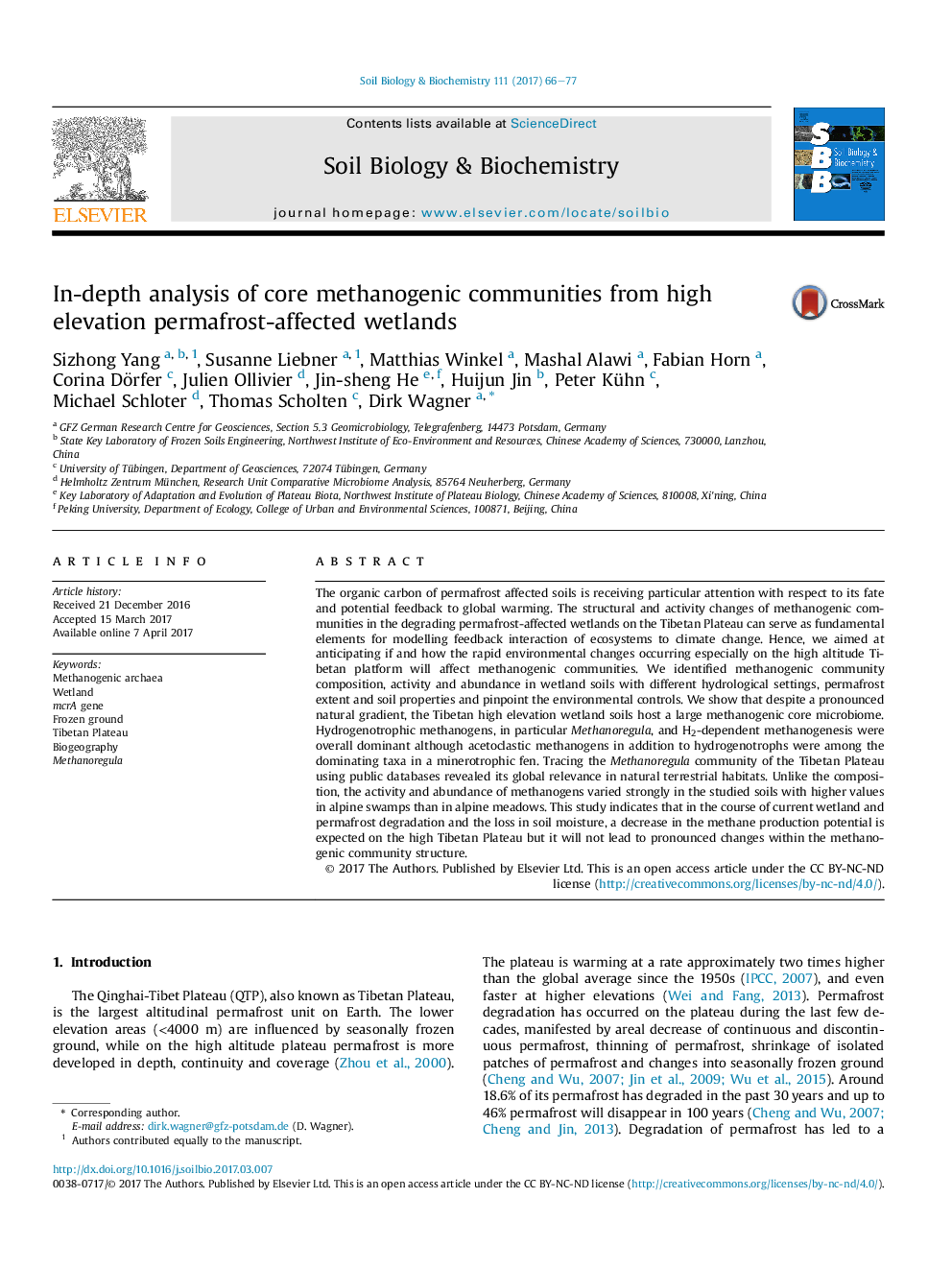| کد مقاله | کد نشریه | سال انتشار | مقاله انگلیسی | نسخه تمام متن |
|---|---|---|---|---|
| 5516286 | 1542573 | 2017 | 12 صفحه PDF | دانلود رایگان |
- Tibetan high elevation wetlands host a large methanogenic core microbiome.
- H2-dependent methanogens and methanogenesis were overall dominant.
- Unlike the structure, the methanogenic activity will be affected by global warming.
- The genus Methanoregula dominating the Tibetan wetlands is also globally relevant.
The organic carbon of permafrost affected soils is receiving particular attention with respect to its fate and potential feedback to global warming. The structural and activity changes of methanogenic communities in the degrading permafrost-affected wetlands on the Tibetan Plateau can serve as fundamental elements for modelling feedback interaction of ecosystems to climate change. Hence, we aimed at anticipating if and how the rapid environmental changes occurring especially on the high altitude Tibetan platform will affect methanogenic communities. We identified methanogenic community composition, activity and abundance in wetland soils with different hydrological settings, permafrost extent and soil properties and pinpoint the environmental controls. We show that despite a pronounced natural gradient, the Tibetan high elevation wetland soils host a large methanogenic core microbiome. Hydrogenotrophic methanogens, in particular Methanoregula, and H2-dependent methanogenesis were overall dominant although acetoclastic methanogens in addition to hydrogenotrophs were among the dominating taxa in a minerotrophic fen. Tracing the Methanoregula community of the Tibetan Plateau using public databases revealed its global relevance in natural terrestrial habitats. Unlike the composition, the activity and abundance of methanogens varied strongly in the studied soils with higher values in alpine swamps than in alpine meadows. This study indicates that in the course of current wetland and permafrost degradation and the loss in soil moisture, a decrease in the methane production potential is expected on the high Tibetan Plateau but it will not lead to pronounced changes within the methanogenic community structure.
Journal: Soil Biology and Biochemistry - Volume 111, August 2017, Pages 66-77
